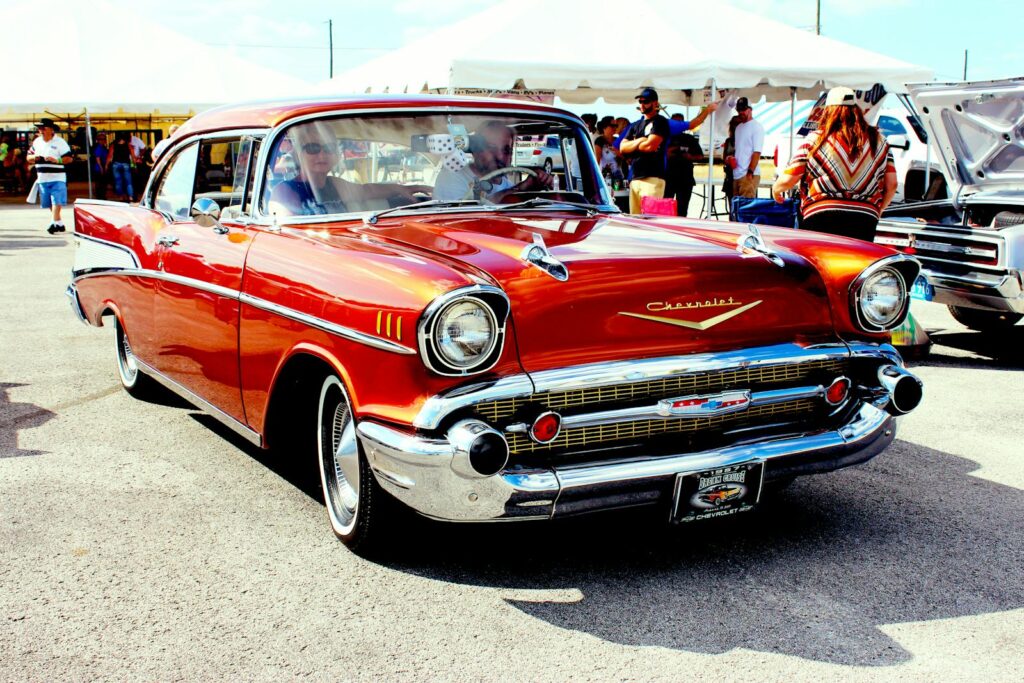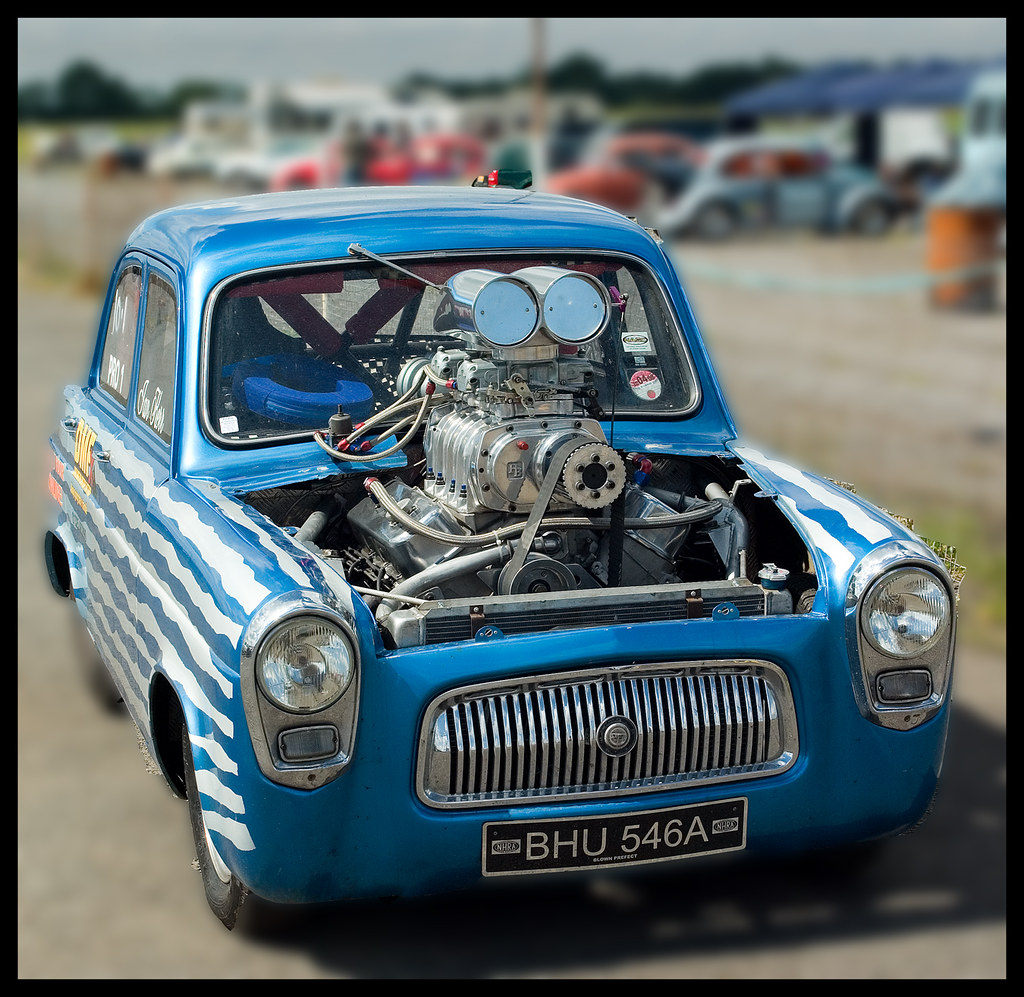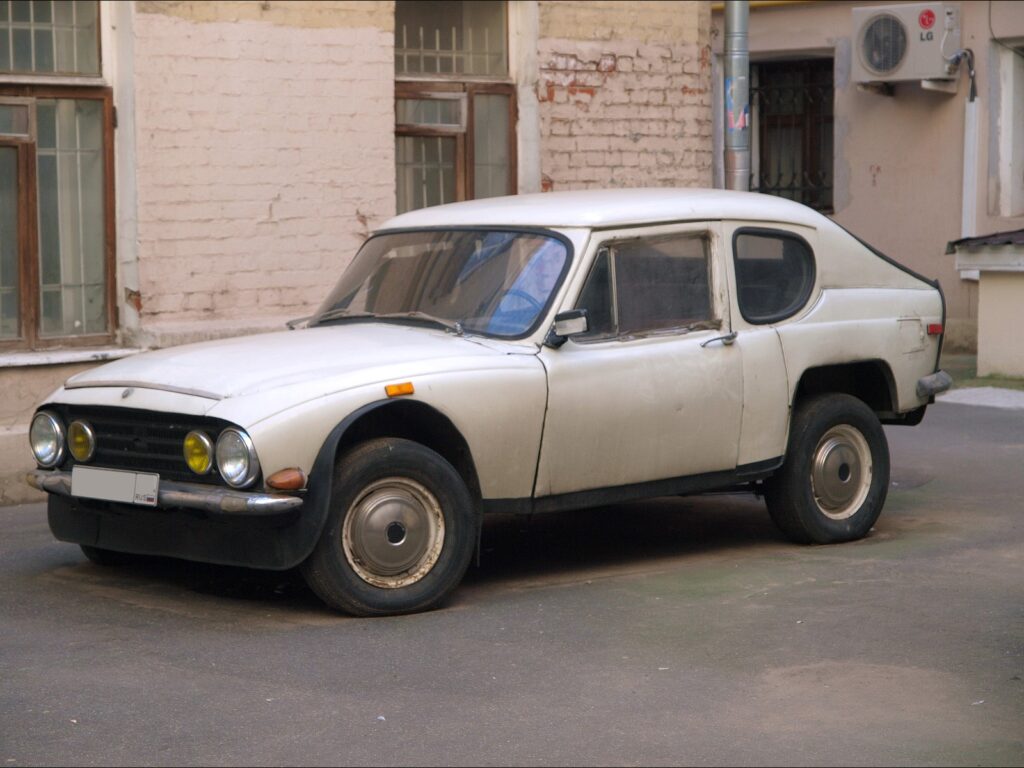Vintage cars possess an undeniable allure, a timeless magnetism that transcends mere transportation. They are not simply machines of the past, but rolling pieces of history, embodying the artistry, engineering prowess, and cultural impact of their respective eras. For automotive enthusiasts, collectors, and even astute investors, these classic automobiles represent the pinnacle of design and performance, often holding a deeply emotional connection alongside their significant financial value. This makes them far more than just vehicles; they are cherished assets that have demonstrably appreciated over the decades, turning into prized possessions worth millions.
In the realm of high-value collectibles, the criteria for a vintage car to attain legendary status are rigorous. Rarity, impeccable condition, historical significance, groundbreaking performance, and an illustrious provenance all converge to elevate certain models from mere old cars to irreplaceable automotive treasures. These factors create exclusivity, drive fervent demand, and solidify their place as investment-grade assets within the global market. Each vehicle tells a unique story, a testament to innovation and the relentless pursuit of driving perfection.
Join us on an exhilarating journey as we delve into the stories behind some of the most iconic and valuable vintage cars in existence. Through the discerning lens of MotorTrend, we’ll explore their unique features, engineering marvels, and the profound reasons why their values have not only endured but skyrocketed, making them highly sought-after collector’s items and true symbols of automotive excellence. We begin our exploration with seven magnificent machines that have cemented their places in the annals of automotive history.
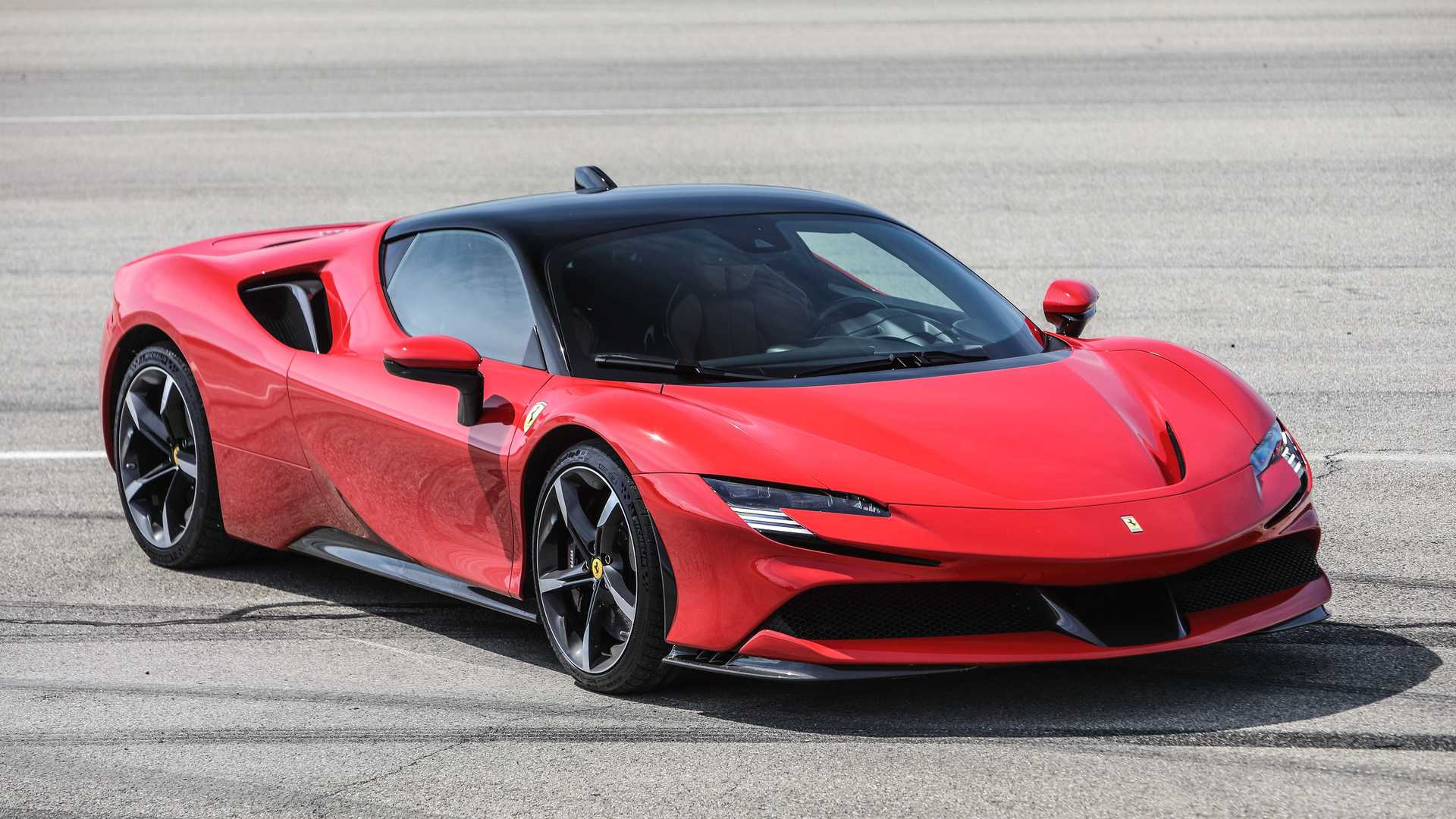
1. **Ferrari 250 GTO: The Holy Grail of Collectible Cars**The Ferrari 250 GTO is unequivocally regarded as the ‘holy grail’ of classic cars, a crown jewel in the world of automotive collectibles. Manufactured between 1962 and 1964, its scarcity is legendary, with only 36 units ever produced. This extreme rarity, coupled with its unparalleled racing pedigree, forms the bedrock of its astronomical value and enduring mystique.
Each 250 GTO was purpose-built for racing, designed to dominate the tracks worldwide. Powered by a formidable 3.0-liter V12 engine, it boasted a top speed exceeding 270 km/h (170 mph), a testament to Ferrari’s engineering brilliance of the era. Its sleek, aerodynamic bodywork, masterfully crafted by Scaglietti, was a harmonious blend of stunning aesthetics and functional performance, ensuring both beauty and blistering speed.
The 250 GTO’s dominance in motorsport throughout the 1960s solidified its legacy. Many of these cars participated in prestigious races such as Le Mans and the Tour de France, each accumulating a unique and storied history. This combination of racing success, limited production, and timeless design has seen its value skyrocket in recent years, making it one of the most expensive cars ever sold.
Indeed, the market has spoken volumes about its unparalleled status. In 2018, a Ferrari 250 GTO set a staggering record, selling for $70 million, making it the most expensive car ever auctioned at that time. Today, well-preserved examples often command prices well over $80 million in private sales, firmly establishing it as the ultimate collector’s item and the pinnacle of Ferrari’s engineering and exclusivity in the automotive world.
Car Model Information: 2024 Honda Civic LX
Name: Ferrari 250 GTO
Caption: 1963 Ferrari 250 GTO (chassis 4153GT)
Manufacturer: Ferrari
Production: 1962–1964,(36 produced)
Designer: Giotto Bizzarrini,Scaglietti
Class: Sports car
BodyStyle: berlinetta
Related: Ferrari 330#330 LMB,Ferrari P#250 LM
Layout: FR layout
Engine: 2,953 cc,Ferrari Colombo engine#250,Overhead camshaft#Single Overhead camshatf,Weber carburetor,Compression ratio
Powerout: 300 PS
Abbr: on
Order: flip @ 5500 rpm
Transmission: Manual transmission
Wheelbase: 2400 mm
Length: 4325 mm
Width: 1600 mm
Height: 1210 mm
Weight: convert
Predecessor: Ferrari 250 GT SWB
Successor: Ferrari 250 LM,Ferrari 288 GTO
Categories: All articles lacking reliable references, All articles needing additional references, All articles with bare URLs for citations, All articles with unsourced statements, Articles lacking reliable references from March 2022
Summary: The Ferrari 250 GTO is a grand tourer produced by Ferrari from 1962 to 1964 for homologation into the FIA’s Group 3 Grand Touring Car category. It was powered by Ferrari’s Tipo 168/62 Colombo V12 engine. The “250” in its name denotes the displacement in cubic centimeters of each of its cylinders; “GTO” stands for Gran Turismo Omologato, Italian for “Grand Touring Homologated”.
Just 36 of the 250 GTOs were manufactured between 1962 and 1964. This includes 33 cars with 1962–63 bodywork (Series I) and three with 1964 (Series II) bodywork similar to the Ferrari 250 LM. Four of the older 1962–1963 (Series I) cars were updated in 1964 with Series II bodies.
When new, the 250 GTO cost $18,000 in the United States, with buyers personally approved by Enzo Ferrari and his dealer for North America, Luigi Chinetti. This model has since become highly desired by automobile collectors and sales have repeatedly set price records. The current record for world’s most expensive Ferrari was set in June 2018 when a 1963 250 GTO (chassis 4153GT) was sold in a private sale for $70 million.
In 2004, Sports Car International placed the 250 GTO eighth on their list of Top Sports Cars of the 1960s, and nominated it the top sports car of all time. Similarly, Motor Trend Classic placed the 250 GTO first on a list of the “Greatest Ferraris of All Time”. Popular Mechanics named it the “Hottest Car of All Time”.
Get more information about: Ferrari 250 GTO
Buying a high-performing used car >>>
Brand: Ferrari Model: 250 GTO
Price: $21,650 Mileage: 17,979 mi.
Read more about: Do You Remember These 14 Jaw-Dropping Cars from the Golden Age of the 1960s?
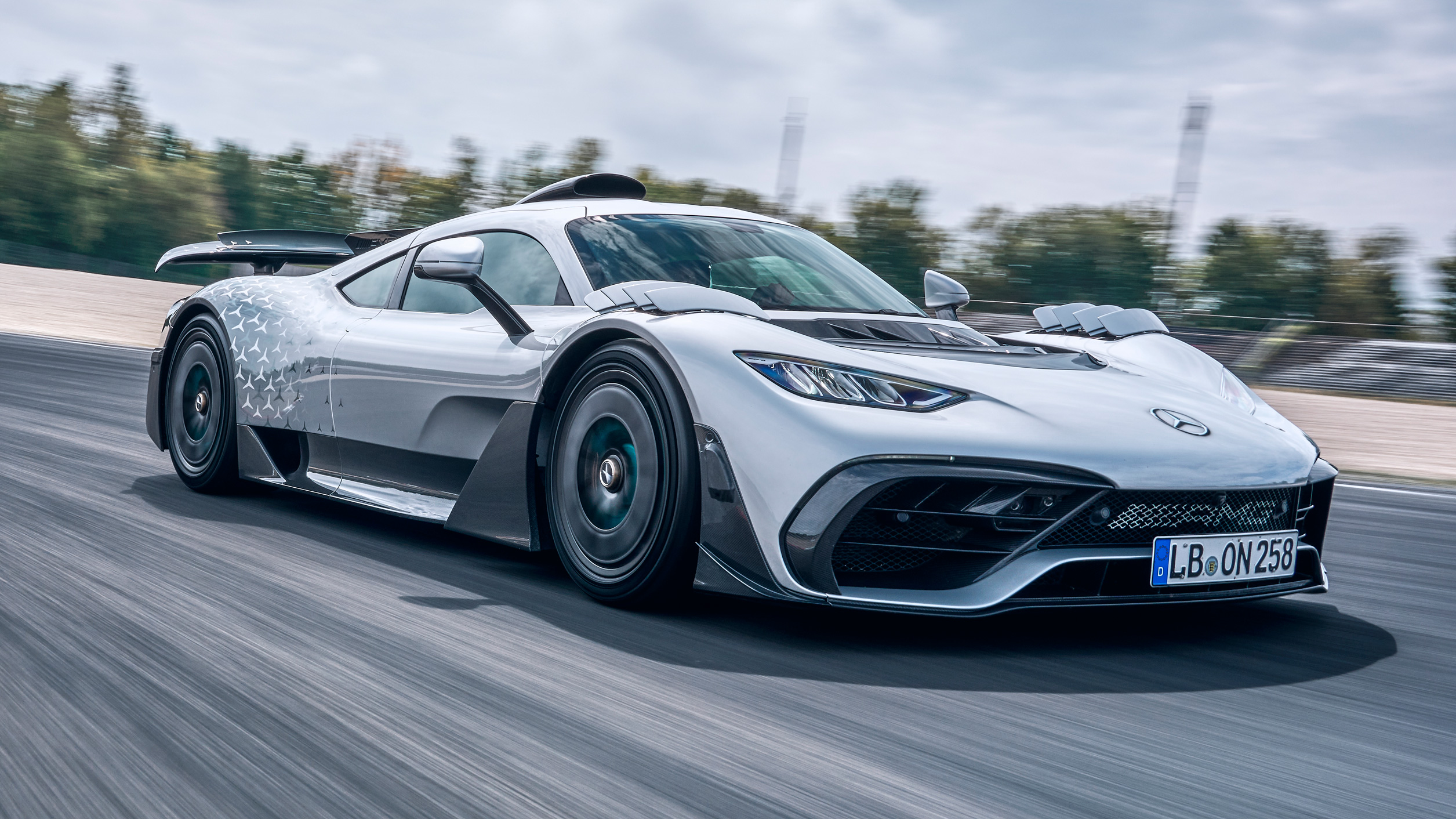
2. **Mercedes-Benz 300SL Gullwing: A German Engineering Marvel**The Mercedes-Benz 300SL Gullwing, introduced in 1954, stands as an indisputable masterpiece of engineering and design, a true icon of automotive history. Its signature upward-opening gullwing doors are instantly recognizable and remain a distinctive design feature that sets it apart from its contemporaries, captivating enthusiasts worldwide.
Beneath its sculptural exterior lies a formidable 3.0-liter straight-six engine, notable for being one of the first production cars to feature direct fuel injection. This advanced technology contributed to its status as the fastest production car of its era, capable of reaching speeds of 161 mph. Its lightweight tubular frame further underscored the cutting-edge engineering that defined the 300SL.
Originally conceived for racing, the Gullwing seamlessly blended track-honed speed with unexpected luxury, offering an experience that was both exhilarating and refined. Only 1,400 units were produced, making it incredibly rare and highly sought after by collectors who appreciate its innovative spirit and timeless appeal. Each car represents a significant moment in automotive advancement.
The enduring value of the 300SL Gullwing is a testament to its legend. Today, pristine examples are highly prized and command significant sums, with prices often exceeding $1.5 million. Exceptional models, particularly those with a clear provenance and meticulous restoration, have been known to fetch several million dollars at high-end auctions, confirming its status as one of the most celebrated and valuable classic cars ever made.
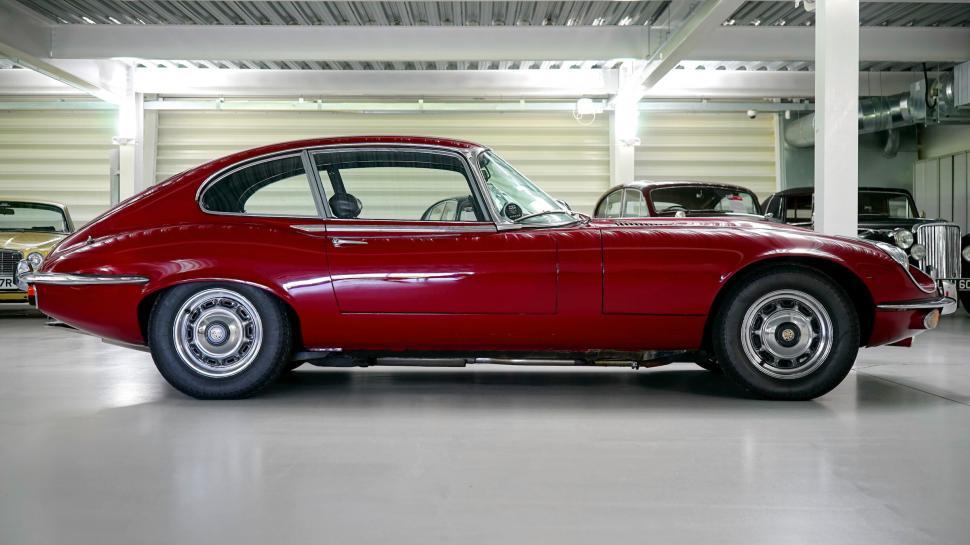
3. **Jaguar E-Type Series 1: The Pinnacle of Elegance**The Jaguar E-Type Series 1, launched in 1961, is often hailed as one of the most beautiful cars ever made, a sentiment even echoed by Enzo Ferrari, who famously called it “the most beautiful car ever made.” Its debut sent shockwaves through the automotive world, instantly capturing hearts with its sleek, aerodynamic lines and powerful performance.
This British icon set new standards for sports car design and engineering. The Series 1 models, especially those equipped with the robust 3.8-liter engine, are particularly coveted by collectors. These early examples perfectly encapsulated a harmonious fusion of art and engineering, offering both breathtaking aesthetics and exhilarating driving dynamics.
The E-Type was not merely about its stunning looks; it was a formidable performer. Its advanced engineering, including independent suspension all-around and disc brakes, was state-of-the-art for its time. With a powerful inline-six engine, it could achieve speeds of up to 150 mph, making it one of the fastest production cars available, a true testament to its sporting intent.
Today, the E-Type’s timeless design and exhilarating driving experience ensure its enduring value. Well-preserved examples can reach prices upwards of $300,000, with meticulously restored models featuring original components commanding even higher sums. Its historical significance, iconic status, and remarkable beauty continue to make it an irresistible target for discerning collectors worldwide.
Car Model Information: 1962 Jaguar E-Type XKE
Sp: uk
Name: Jaguar E-Type
Caption: 1961 E-Type Series 1 3.8-Litre, the first production model of this open two-seater
Aka: Jaguar XK-E , Jaguar V-12
Manufacturer: Jaguar Cars
Production: 1961–1974
Class: Sports car
Predecessor: Jaguar XK150
Related: Jaguar D-Type,Jaguar XJ13
Successor: Jaguar XJS
Layout: FMR layout
Assembly: Coventry,England
Designer: Malcolm Sayer
Categories: 1970s cars, 2+2 coupés, All articles with dead external links, All articles with specifically marked weasel-worded phrases, All articles with unsourced statements
Summary: The Jaguar E-Type, or the Jaguar XK-E for the North American market, is a British front mid-engined sports car that was manufactured by Jaguar Cars Ltd from 1961 to 1974. Its sleek appearance, advanced technologies, high performance, and competitive pricing established it as an icon. The E-Type’s claimed 150 miles per hour (240 km/h) top speed, sub-7-second 0 to 60 mph (97 km/h) acceleration, largely unitary body construction, front and rear independent suspension with disc brakes, mounted inboard at the rear, and rack-and-pinion steering spurred industry-wide changes.
The E-Type was based on Jaguar’s D-Type racing car, which had won the 24 Hours of Le Mans for three consecutive years beginning in 1955.
The E-Type employed what was, for the early 1960s, a novel design principle, with a front subframe carrying the engine, front suspension and front bodywork bolted directly to the body tub. No ladder frame chassis, as was common at the time, was needed and as such the first cars weighed only 1,315 kg (2,899 lb).
It is rumored that, on its debut on 15 March 1961, Enzo Ferrari called it “the most beautiful car ever made”, but this statement is not fully confirmed. In 2004, Sports Car International magazine placed the E-Type at number one on their list of Top Sports Cars of the 1960s. In March 2008, the Jaguar E-Type ranked first in The Daily Telegraph’s online list of the world’s “100 most beautiful cars” of all time.
Get more information about: Jaguar E-Type
Buying a high-performing used car >>>
Brand: Jaguar Model: E-Type
Price: $269,900 Mileage: 76,725 mi.
Read more about: Revving Through History: Uncovering the World’s Most Expensive Cars of the 1960s, a MotorTrend Deep Dive

4. **Aston Martin DB5: James Bond’s Ride**The Aston Martin DB5 gained global immortality through its iconic association with James Bond in the film “Goldfinger.” This cinematic legacy has only served to amplify its desirability, elevating it beyond a mere luxury car to a cultural icon synonymous with sophistication, intrigue, and quintessential British elegance. It is, without doubt, one of the most recognizable cars ever.
Produced between 1963 and 1965, the DB5 was a limited-production masterpiece, with only 1,059 units ever made. It featured a powerful all-aluminum 4.0-liter inline-six engine, delivering a blend of refined performance and robust reliability. The car’s luxurious interior, complete with sumptuous leather seats and a finely crafted wooden dashboard, further underscored its status as a grand tourer of the highest order.
The DB5 perfectly combined elegant styling with impressive capabilities. Its graceful lines and distinctive grille made it a symbol of automotive beauty, while its performance characteristics ensured it was more than just a showpiece. This blend of style, performance, and its indelible cinematic history makes it a highly sought-after collector’s item, representing a golden era of British motoring.
Today, well-maintained DB5 models frequently exceed $1 million in value, with special James Bond-edition models or examples with verifiable movie provenance fetching even higher prices. Its status as a cultural phenomenon and a genuinely magnificent automobile guarantees its enduring appeal and makes it a cherished acquisition for collectors and enthusiasts alike, a true piece of automotive and cinematic history.
Car Model Information: 2024 Honda Civic LX
Name: Aston Martin DB5
Manufacturer: Aston Martin
Production: 1963–1965 (1,059 units),2020 (25 units)
Assembly: Newport Pagnell
Designer: Carrozzeria Touring Superleggera
Class: Grand tourer
BodyStyle: coupé
Layout: Front-engine, rear-wheel-drive layout
Engine: DOHC,Straight-6,3995 cc
Order: flip
Abbr: on
Powerout: convert
Transmission: ZF Friedrichshafen
Length: 4570 mm
Width: 1680 mm
Wheelbase: 98.0 in
Predecessor: Aston Martin DB4
Successor: Aston Martin DB6
Doors: 2
Weight: 3311 lb
Sp: uk
Categories: Articles with short description, Aston Martin vehicles, CS1: unfit URL, Cars discontinued in 1965, Cars introduced in 1963
Summary: The Aston Martin DB5 is a British grand tourer (GT) produced by Aston Martin and designed by Italian coachbuilder Carrozzeria Touring Superleggera. Originally produced from 1963 to 1965, the DB5 was an evolution of the final series of DB4. The “DB” designation is from the initials of David Brown who built up the company from 1947 onwards.
The DB5 is best-known for its role in the James Bond films. It was first driven by the fictional spy in the film Goldfinger (1964). In 2013, the car featured on a “British Auto Legends” postage stamp issued by the Royal Mail.
Get more information about: Aston Martin DB5
Buying a high-performing used car >>>
Brand: Aston Martin Model: DB5
Price: $21,650 Mileage: 17,979 mi.

5. **Lamborghini Miura: The Dawn of the Supercar Era**The Lamborghini Miura is widely credited with igniting the supercar trend, forever changing the landscape of high-performance automobiles. Introduced in 1966, its mid-engine layout was nothing short of revolutionary, placing a powerful V12 engine behind the passenger compartment for optimal weight distribution and handling, a design philosophy that would define future supercars.
The Miura’s design, a collaborative masterpiece by Marcello Gandini at Bertone, featured sleek curves, aggressive lines, and an impossibly low stance that immediately made it an icon. Its sensuous bodywork was and remains breathtaking, embodying Italian passion and artistic flair in every detail. It was a visual and engineering marvel that turned heads and captivated imaginations.
Rarity contributes significantly to the Miura’s enduring allure. Only 764 units were produced during its initial run, making it a highly exclusive vehicle. Later, the even more refined Miura SV (Spinto Veloce), with only 150 units, further enhanced its legend, boasting a more powerful 3.9-liter V12 engine producing 385 horsepower and an even more exhilarating driving experience.
Today, a well-preserved Lamborghini Miura is an extremely valuable asset. Standard models can fetch upwards of $2.5 million, while the rarer and more potent Miura SV often commands prices exceeding $3 million at auction. Its combination of groundbreaking innovation, stunning design, and inherent scarcity keeps its value consistently high, cementing its place as the original and arguably most beautiful supercar.

6. **Ford GT40: Le Mans Legend and Giant Killer**The Ford GT40 is more than just a car; it is a legend forged in the crucible of motorsport, famously achieving what many thought impossible: winning the 24 Hours of Le Mans four consecutive times from 1966 to 1969. This remarkable feat firmly established its place in racing history and in the hearts of automotive enthusiasts worldwide. It was a direct response to Ferrari’s dominance.
Built in the 1960s, the GT40’s design was driven by a single purpose: racing dominance. Its incredibly low profile, standing just 40 inches tall (hence “GT40”), and its powerful American V8 engine were engineered to conquer the high-speed demands of endurance racing. The car’s aggressive stance and aerodynamic efficiency were cutting-edge for its time, a testament to its relentless pursuit of victory.
Such a specialized machine was, naturally, produced in limited numbers. Only 105 original GT40s were made, making it an extremely rare and highly sought-after vehicle. Each one carries a piece of that epic racing history, a tangible link to one of the greatest rivalries in motorsport, epitomized by the “Ford v Ferrari” narrative.
Today, the Ford GT40 is among the most valuable vintage cars, a testament to its unparalleled racing pedigree and iconic status. Well-documented examples can command over $10 million at auction, with a Ford GT40 MK II, for instance, fetching $9.8 million in 2018. Its legacy as a giant-killer and an engineering marvel ensures its continued appreciation and desirability among the most serious collectors.
Continuing our journey through automotive history, we now explore eight more legendary vintage automobiles. These machines represent pinnacle achievements in design, engineering, and carry an unmatched legacy of rarity, racing pedigree, and astounding investment value. Each car is a testament to the relentless pursuit of perfection, embodying a distinct era of innovation and passion that continues to resonate today.
Car Model Information: 1966 Ford GT40
Name: Ford GT40
Caption: Ford GT40 Mk.I in JWA Gulf Oil racing colors
Manufacturer: Ford Advanced Vehicles,John Wyer,Kar Kraft,Holman-Moody,Shelby American
Production: 1964–1969
Assembly: Slough,Los Angeles
Designer: Ron Bradshaw
Class: Group 4 (racing),Group 5 (racing),Group 6 (racing)
BodyStyle: coupé
Layout: MR layout
Engine: Cubic inch,289 CID (4737 cc) V-8,302 CID (4942 cc) V-8,427 CID (6997 cc) V-8
Transmission: Manual transmission
Wheelbase: 95 in
Abbr: on
Length: 160 in
Width: 70 in
Height: 40.5 in
Weight: convert
Successor: Ford P68
Sp: uk
Categories: 24 Hours of Le Mans race cars, All Wikipedia articles needing clarification, All articles needing additional references, All articles that may contain original research, All articles with specifically marked weasel-worded phrases
Get more information about: Ford GT40
Buying a high-performing used car >>>
Brand: Ford Model: GT40
Price: $110,000 Mileage: 13,350 mi.
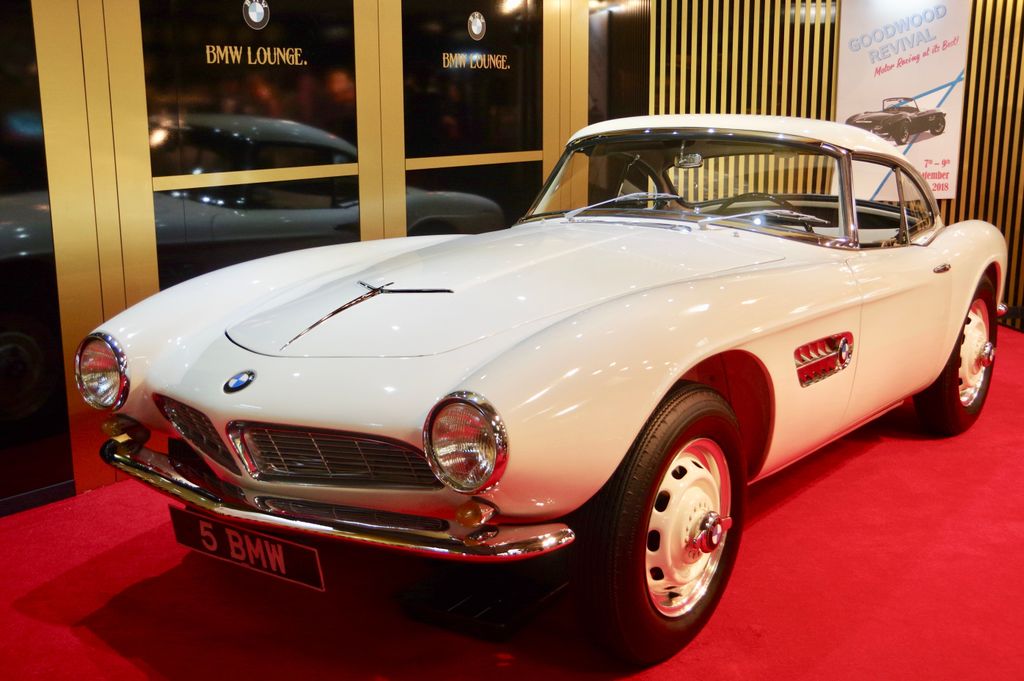
7. **BMW 507: A Symphony of German Elegance**The BMW 507, produced between 1956 and 1959, is a rare automotive gem, instantly recognizable for its strikingly elegant design. Only 252 units were crafted, establishing its status as one of the most exclusive roadsters of its time. Beneath its captivating exterior lay a powerful V8 engine, delivering a refined driving experience that perfectly complemented its luxurious aesthetics.
Its sculpted bodywork, often attributed to Count Albrecht von Goertz, presented a vision of timeless beauty, distinguishing it from other cars of its era. The 507 wasn’t just a car; it was a statement of sophistication, blending performance with an undeniable sense of prestige. Every line and curve contributed to an impression of effortless grace, making it a favorite among the affluent.
Today, this scarcity, combined with its iconic design and impressive engineering, translates into extraordinary value. The BMW 507 is a highly coveted collector’s item, with pristine examples frequently commanding prices well over $2 million at auction. Its enduring allure reflects its legacy as a masterpiece of post-war German automotive art.
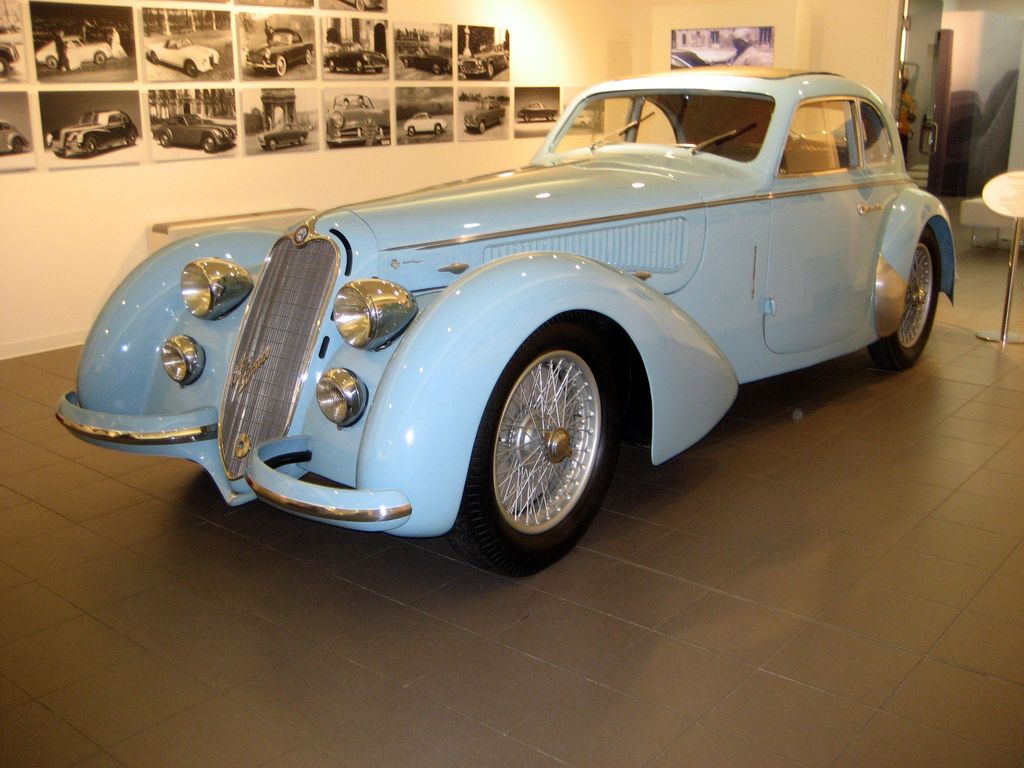
8. **Alfa Romeo 8C 2900: Pre-War Italian Grandeur**The Alfa Romeo 8C 2900 stands as an undisputed masterpiece of pre-war engineering and design, an automotive icon from the late 1930s. It represents a zenith of Italian craftsmanship, blending stunning aesthetics with groundbreaking mechanical prowess. This vehicle was a testament to the era’s ambition in pushing performance boundaries.
At its core, the 8C 2900 featured an advanced supercharged straight-eight engine, a technological marvel for its time that propelled it to remarkable speeds. This powerful engine was housed within a chassis adorned with exquisite bodywork, often custom-built by renowned coachbuilders. Only a mere handful of these magnificent machines were ever produced, cementing their legendary rarity.
The combination of extreme scarcity, breathtaking beauty, and formidable performance has ensured the Alfa Romeo 8C 2900’s place among the most valuable cars ever. In recent years, its market value has soared dramatically, with well-preserved models fetching prices exceeding $20 million. This makes it one of the most passionately sought-after vehicles for those who appreciate the pinnacle of vintage automotive artistry.
Car Model Information: 2024 Honda Civic LX
Caption: Custom Alfa Romeo 8C (1936)
Name: Alfa Romeo 8C
Manufacturer: Alfa Romeo
Production: 1931–1939
Assembly: Portello (district of Milan)
Class: Luxury car,Sports car,Racing car
Layout: FR layout
Engine: Straight-8
Designer: Vittorio Jano
Categories: 24 Hours of Le Mans race cars, Alfa Romeo sports racing cars, Alfa Romeo vehicles, Articles with short description, Cars introduced in 1931
Summary: The Alfa Romeo 8C was a range of Alfa Romeo road, race and sports cars of the 1930s.
The 8C designates 8 cylinders, and originally a straight 8-cylinder engine. The Vittorio Jano designed 8C was Alfa Romeo’s primary racing engine from its introduction in 1931 to its retirement in 1939. In addition to the two-seater sports cars it was used in the world’s first genuine single-seat Grand Prix racing car, the Monoposto ‘Tipo B’ – P3 from 1932 onwards. In its later development it powered such vehicles as the twin-engined 1935 6.3-litre Bimotore, the 1935 3.8-litre Monoposto 8C 35 Type C, and the Alfa Romeo 8C 2900B Mille Miglia Roadster. It also powered top-of-the-range coach-built production models, including a Touring Spider and Touring Berlinetta.
In 2004 Alfa Romeo revived the 8C name for a V8-engined concept car. This eventually made it into production in 2007, as the 8C Competizione.
Get more information about: Alfa Romeo 8C
Buying a high-performing used car >>>
Brand: Alfa Romeo Model: 8C 2900
Price: $21,650 Mileage: 17,979 mi.

9. **Bugatti Type 57SC Atlantic: Automotive Art Beyond Compare**The Bugatti Type 57SC Atlantic is unequivocally one of the most exclusive and valuable automobiles ever created, a true work of art on wheels. Designed in the 1930s by Jean Bugatti, its distinctive art-deco styling and innovative engineering set it apart entirely. Its unique teardrop shape and riveted dorsal seam, inspired by aircraft, were revolutionary.
Exclusivity defines the Atlantic, as only four units were ever produced, and astonishingly, just three are known to survive today. Each vehicle is not merely a car but an individual sculpture, showcasing an unparalleled level of craftsmanship and design vision. This extreme scarcity elevates it to a mythical status within the automotive world.
Underneath its exquisite, handcrafted details, the Type 57SC Atlantic featured a supercharged 3.3-liter inline-eight engine, masterfully blending elegance with formidable performance. Its engineering was as cutting-edge as its design. Today, this Bugatti’s value is almost unimaginable; with estimates soaring over $100 million, it remains a testament to unparalleled rarity, historical importance, and its enduring status as the absolute pinnacle of automotive art.
Car Model Information: 2024 Honda Civic LX
Name: Bugatti Type 57
Caption: 1936 Bugatti Type 57 Atalante
Manufacturer: Bugatti
Assembly: Molsheim
Production: 1934–1940,710 produced
Designer: Jean Bugatti
Class: Grand tourer
Engine: DOHC,Straight-8
Predecessor: Bugatti Type 49
Successor: Bugatti Type 101
Categories: 24 Hours of Le Mans race cars, Articles with short description, Bugatti automobiles, CS1 Romanian-language sources (ro), Cars introduced in 1934
Summary: The Bugatti Type 57 and later variants (including the famous Atlantic and Atalante) was a grand tourer built from 1934 through 1940. It was an entirely new design created by Jean Bugatti, son of founder Ettore. A total of 710 Type 57s were produced.
Type 57s used a straight-8 twin-cam engine of 3.3 L (3257 cc/198 in³) displacement. Bore and stroke were 72 mm by 100 mm based on that of the Type 49 but heavily modified by Jean Bugatti, unlike the single cam engines of the Type 49 and earlier models. The engines of the Type 50, 51 used bevel gears at the front of the engine to transmit power from the crankshaft, whereas the Type 57 used a train of spur gears at the rear of the engine, with fiber gear wheels on the camshafts to achieve more silence in operation.
There were two basic variants of the Type 57 car:
The original Type 57
The lowered Type 57S/SC
The Type 57 chassis and engine was revived in 1951 as the Bugatti Type 101. A rediscovered Type 57 was sold for 3.4 million euros at auction on 7 February 2009 at a motor show in Paris.
Get more information about: Bugatti Type 57
Buying a high-performing used car >>>
Brand: Bugatti Model: Type 57SC Atlantic
Price: $21,650 Mileage: 17,979 mi.
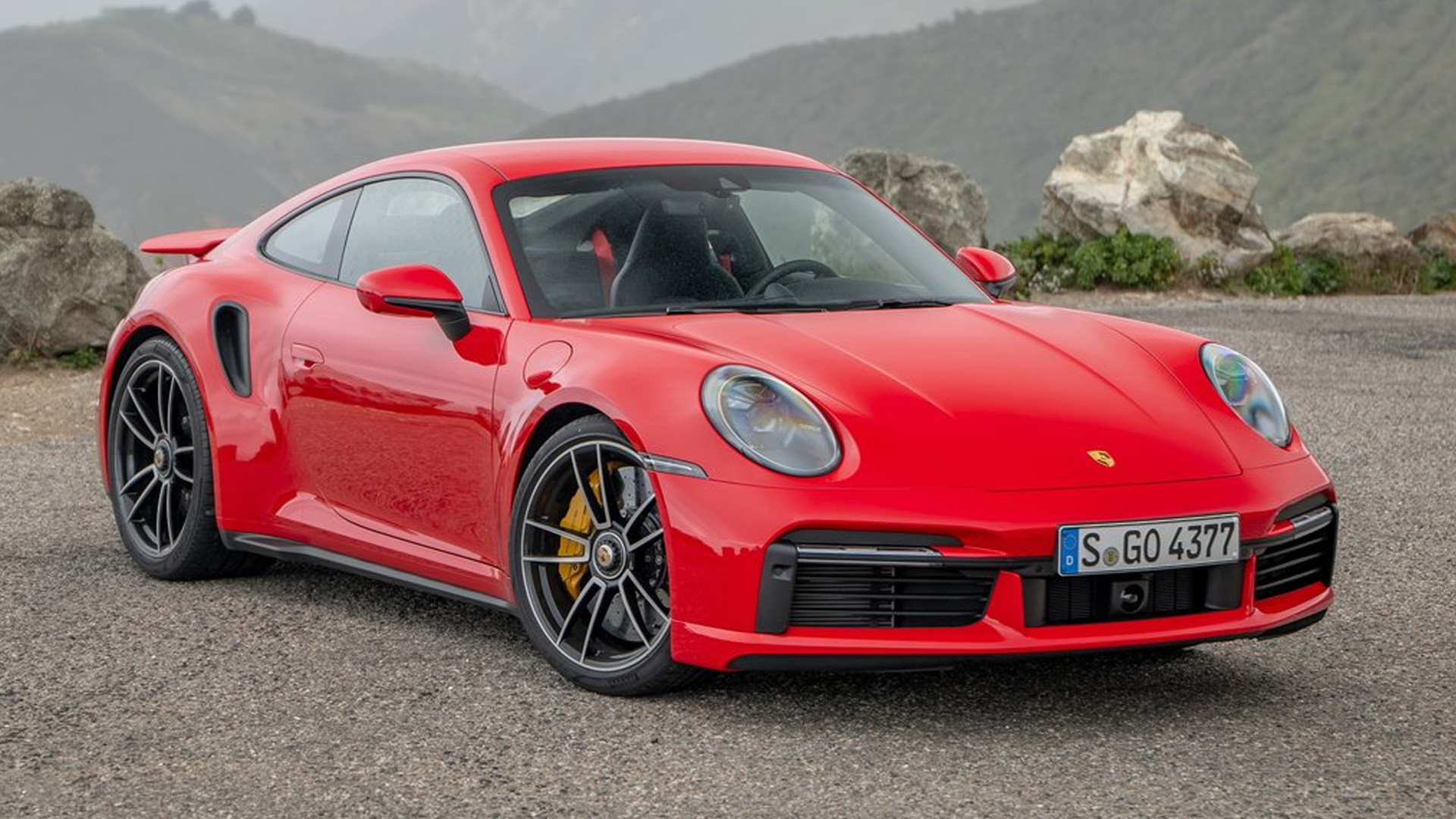
10. **Porsche 356 Speedster: The Essence of Driving Purity**The Porsche 356 Speedster, introduced in 1954, is a beloved classic embodying the purest form of the Porsche driving experience. Conceived as a lightweight, stripped-down version of the standard 356, its minimalist interior, iconic low windshield, and agile handling instantly communicated its sporting intentions. It offered a raw, unfiltered connection between driver and road, making it an immediate hit.
While a few thousand units were produced, the most desirable examples are from its initial run (1954-1958). These early models, powered by a spirited 1.6-liter flat-four engine, remain a favorite among driving purists for their directness and responsiveness. Its unique character, defined by simple yet effective engineering, fostered deep driver engagement.
Today, the enduring charm and performance purity of the 356 Speedster ensure its significant market value. Well-maintained examples frequently fetch prices exceeding $500,000, establishing it as a highly prized classic. Its combination of historical significance, captivating design, and exhilarating driving dynamics continues to captivate enthusiasts.
Car Model Information: 2024 Honda Civic LX
Name: Porsche 356
Manufacturer: unbulleted list
Production: 1948–1965
Assembly: Gmünd, Carinthia
Successor: Porsche 911 (classic)
Caption: Porsche 356 C coupé
Class: Sports car
Related: unbulleted list
Layout: Rear-engine, rear-wheel-drive layout
BodyStyle: unbulleted list
Designer: Ferry Porsche,Erwin Komenda
Wheelbase: 82.7 in
Abbr: on
Order: flip
Length: convert
Width: 65.4 in
Height: convert
Weight: convert
Categories: 1950s cars, 1960s cars, 24 Hours of Le Mans race cars, All Wikipedia articles written in American English, All articles containing potentially dated statements
Summary: The Porsche 356 is a rear-engine sports car, and the first ever production Porsche model.
The 356 is a lightweight and nimble-handling, rear-engine, rear-wheel drive, two-door available both in hardtop coupé and open configurations. Engineering innovations continued during the years of manufacture, contributing to its motorsports success and popularity. Production started in 1948 at Gmünd, Austria, where Porsche built approximately 50 cars. In 1950 the factory relocated to Zuffenhausen, Germany, and general production of the 356 continued until April 1965, well after the replacement model 911 made its September 1964 debut. Of the 76,000 originally produced, approximately half survive. It was first produced by Austrian company Porsche Konstruktionen GesmbH (1948–1949), and then by German company Dr. Ing. h. c. F. Porsche GmbH (1950–1965). It was Porsche’s first production automobile. Earlier cars designed by the Austrian company include Cisitalia Grand Prix race car, the Volkswagen Beetle, and Auto Union Grand Prix cars.
The original price in 1948 for the 356 coupe was US$3,750 (equivalent to $49,100 in 2024) (official general USD inflation). The 356 cabriolet cost US$4,250 (equivalent to $55,600 in 2024).
Get more information about: Porsche 356
Buying a high-performing used car >>>
Brand: Porsche Model: 356 Speedster
Price: $21,650 Mileage: 17,979 mi.
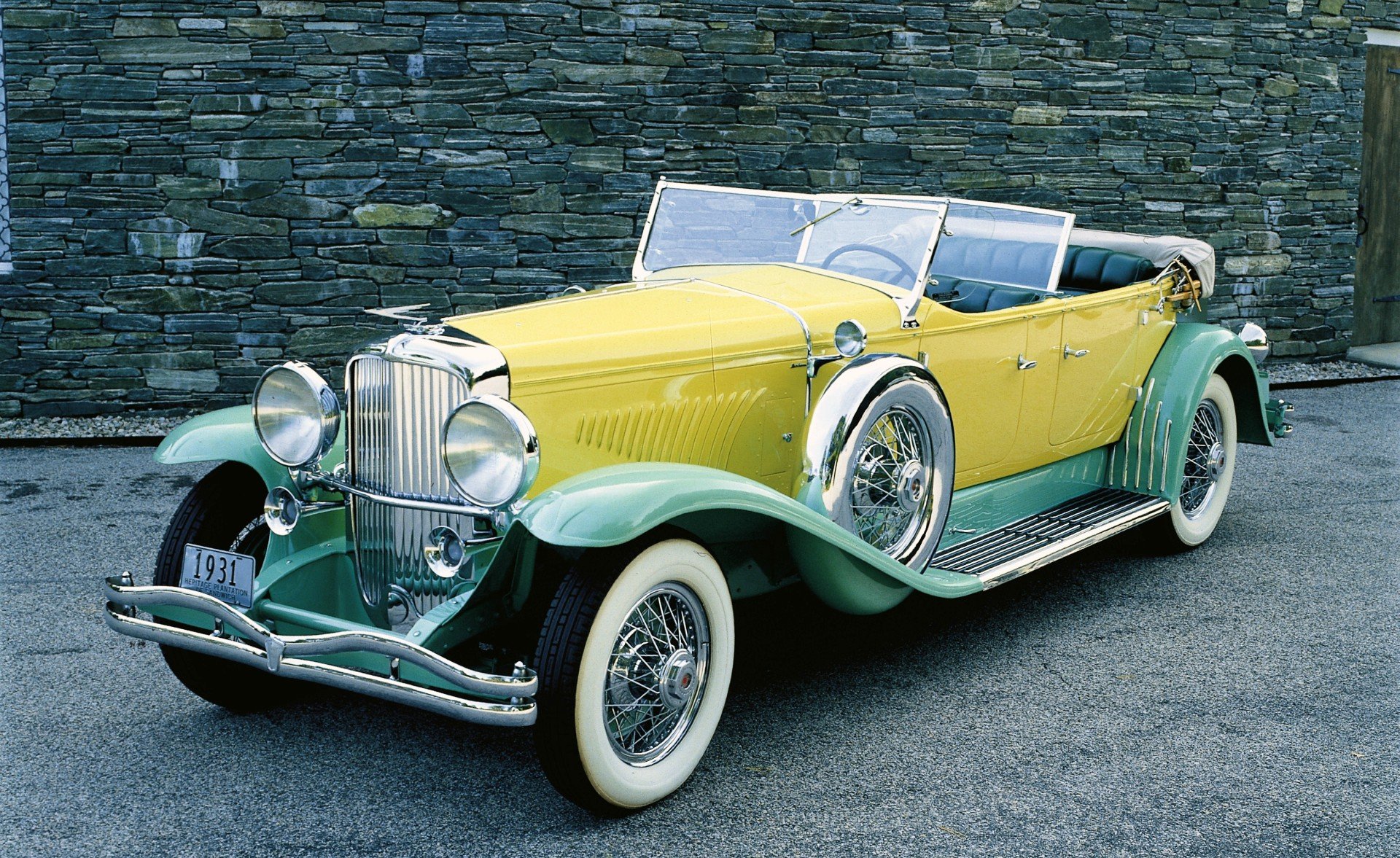
11. **Duesenberg Model J: American Grandeur and Engineering Excellence**The Duesenberg Model J, launched in 1928, stands as an enduring icon of American luxury and engineering prowess, representing the zenith of pre-Depression era automotive opulence. At its debut, it was the most advanced and expensive car available, designed for an elite clientele who demanded nothing less than perfection. It was a symbol of unchecked prosperity and mechanical sophistication.
Powering this magnificent machine was a massive 6.9-liter straight-eight engine, an engineering marvel that delivered unparalleled performance for its time. This formidable powerplant ensured that the Model J was not just a symbol of status, but also a formidable performer on the road, capable of effortlessly cruising at high speeds.
Rarity further solidifies the Model J’s legendary status, with only 481 units ever made. Each vehicle was a bespoke creation, custom-built to the precise specifications and extravagant desires of its original owner. Today, its value has soared astronomically, with pristine examples frequently selling for over $20 million. The Duesenberg Model J remains a quintessential symbol of American automotive excellence.
Car Model Information: 2024 Honda Civic LX
Name: Sfn
Caption: 1930 Duesenberg J Murphy Torpedo Convertible
Manufacturer: Duesenberg
Aka: Duesenberg J,Duesenberg SJ (supercharged),Duesenberg SSJ (short-wheelbase supercharged)
Production: 1928–1937,481 produced (445 Model J, 36 Model SJ)
Assembly: Indianapolis,Indiana,United States
Designer: Gordon Buehrig
Class: Full-size car,Luxury vehicle
BodyStyle: Coachbuilt to owner’s preference
Layout: Front-engine, rear-wheel-drive layout#Front mid-engine, rear-wheel-drive layout
Engine: 420 cuin
Abbr: on
Disp: Sfn
Transmission: Manual transmission
Wheelbase: {{convert,142.5,in,mm,1,abbr=on,disp=flip
Predecessor: Duesenberg Model A
Sp: us
Categories: 1930s cars, All articles with unsourced statements, Articles with short description, Articles with unsourced statements from December 2013, Articles with unsourced statements from June 2012
Summary: The Duesenberg Model J is a luxury automobile made by Duesenberg exclusively in 1928 and offered for ten subsequent years. Intended to compete with the most luxurious and powerful cars in the world, it was introduced in 1928, the year before the stock market crash that led to the Great Depression. Duesenberg Motors Company went bankrupt in 1937.
Get more information about: Duesenberg Model J
Buying a high-performing used car >>>
Brand: Duesenberg Model: Model J
Price: $21,650 Mileage: 17,979 mi.
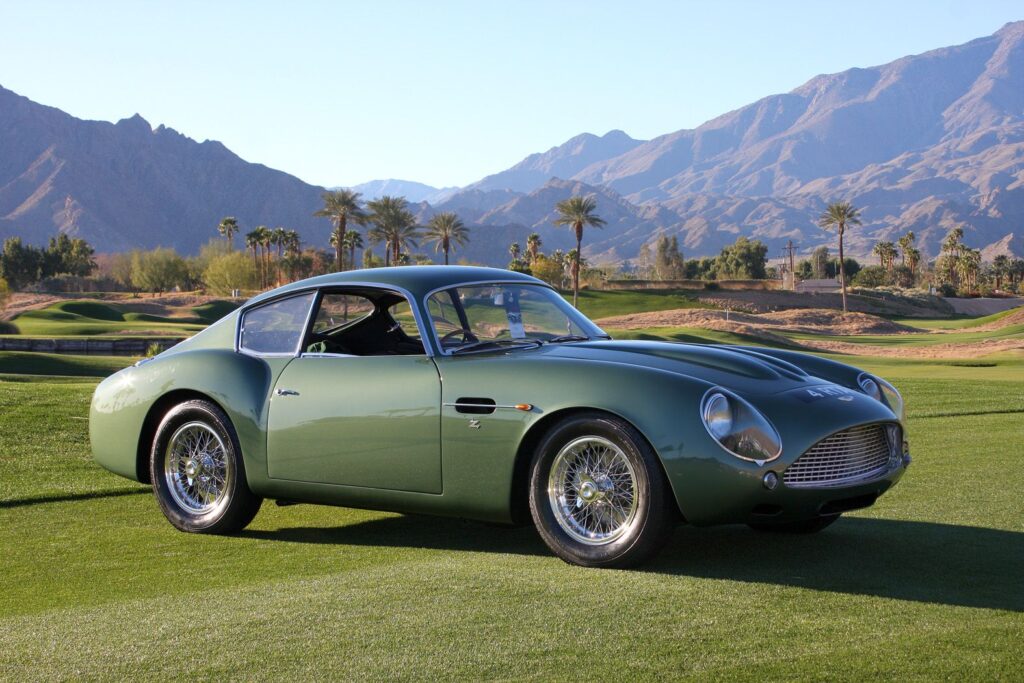
12. **Aston Martin DB4 GT Zagato: A Rare Anglo-Italian Masterpiece**The Aston Martin DB4 GT Zagato is an exceptionally rare and highly sought-after model, born from a remarkable collaboration between British engineering and Italian design flair. Produced between 1960 and 1963, its exclusivity is profound, with an astonishingly limited run of only 19 units ever built. This scarcity instantly places it among the most desirable vintage cars.
Designed by the renowned Italian coachbuilder Zagato, this grand tourer perfectly combined lightweight construction with Aston Martin’s powerful 3.7-liter engine. The result was a car that was not only visually breathtaking but also a formidable competitor on the race track. Its distinctive “double-bubble” roof and flowing lines marked it as an instant classic.
The car’s striking design, alongside its illustrious racing pedigree, makes it immensely desirable. Each DB4 GT Zagato is a testament to the pursuit of speed and beauty, a perfect synthesis of form and function. Today, its market value consistently exceeds $15 million, reflecting its unparalleled rarity, stunning aesthetics, and proven performance.
Car Model Information: 2024 Honda Civic LX
Name: Aston Martin DB4 GT Zagato
Manufacturer: Aston Martin
Production: 1960–1963,(25 produced, inc 4 Sanction II and 2 Sanction III)
Class: Grand tourer
BodyStyle: Coupe
Engine: straight-6
Transmission: 4-speed manual
Wheelbase: 2362 mm
Abbr: on
Length: 4267 mm
Width: 1557 mm
Height: 1270 mm
Weight: 1225 kg
Successor: Aston Martin V8 Zagato
Related: Aston Martin DB4
Designer: Ercole Spada
Sp: uk
Categories: All articles needing additional references, All articles with unsourced statements, Articles needing additional references from April 2018, Articles needing additional references from July 2025, Articles with short description
Summary: The Aston Martin DB4 GT Zagato is a grand tourer sports car designed by Zagato and produced between 1960 and 1963. Introduced in October 1960 at the London Motor Show, it was effectively a DB4 GT, lightened and improved by the Zagato factory in Italy, by Ercole Spada. Initially, the factory planned to produce 25 cars, but demand was not as strong as expected and production was reduced to 19.
Growing popularity of the original DB4 GT Zagato resulted in two subsequent waves of cars based on DB4s being rendered into “Zagatos” through the cooperation of Aston Martin and the Zagato works in Italy. They are known as “Sanction II” and “Sanction III” cars. Also, an unauthorised industry of modifying original DB4 GTs into “Zagato” replicas has arisen.
Get more information about: Aston Martin DB4 GT Zagato
Buying a high-performing used car >>>
Brand: Aston Martin Model: DB4 GT Zagato
Price: $21,650 Mileage: 17,979 mi.

13. **Mercedes-Benz 300 SLR: A Racing Legend and Record Breaker**The Mercedes-Benz 300 SLR is a masterpiece of 1950s engineering, built for endurance racing that transcended its competitive origins to become a legend. Its legacy is deeply intertwined with a dramatic, almost mythical, history, including its association with the tragic yet iconic 1955 Le Mans disaster. This dual narrative of triumph and tragedy amplified its mystique.
Rarity is a defining characteristic, with only two road versions ever manufactured. One, the “Uhlenhaut Coupé,” remained in Mercedes-Benz’s possession for decades, symbolizing the pinnacle of their engineering prowess. This extreme exclusivity, coupled with its profound historical significance, makes it an almost unobtainable collector’s item.
Equipped with a formidable 3.0-liter straight-eight engine, directly derived from Formula 1 technology, the 300 SLR was capable of breathtaking speeds exceeding 250 km/h (155 mph). Its distinctive gullwing doors and advanced engineering innovations set it far apart. In a private sale in 2022, one reportedly fetched an astonishing $143 million, setting an all-time record. This extraordinary valuation underscores its unique place in automotive history and Mercedes-Benz’s enduring racing brilliance.
Car Model Information: 2024 Honda Civic LX
Caption: Mercedes-Benz Museum
CarName: Mercedes-Benz 300 SLR
Category: World Sportscar Championship
Constructor: Mercedes-Benz in Formula One
Team: Mercedes-Benz in Formula One
Drivers: flagicon,Stirling Moss,flagicon,Pierre Levegh
EngineName: Mercedes-Benz M196 engine
Configuration: straight-8
Capacity: 2982 cc
Abbr: on
EnginePosition: front-mid
GearboxName: Daimler-Benz
Type: 5-speed transaxle gearbox
FrontSuspension: Double wishbone, torsion bar springs, telescopic shock absorbers
RearSuspension: Single-joint swing axle, longitudinal torsion-bar springs, telescopic shock absorbers
Fuel: Super petrol (98 RON)
Tyres: Continental AG
Debut: 1955 Mille Miglia
Designer: Rudolf Uhlenhaut
Categories: 24 Hours of Le Mans race cars, All articles with unsourced statements, Articles with short description, Articles with unsourced statements from May 2023, Automobiles with gull-wing doors
Get more information about: Mercedes-Benz 300 SLR
Buying a high-performing used car >>>
Brand: Mercedes-Benz Model: 300 SLR
Price: $21,650 Mileage: 17,979 mi.

14. **Porsche 917: The Apex of Endurance Racing Dominance**The Porsche 917 stands as an indelible symbol of the brand’s relentless pursuit of victory and its dominance in endurance racing, particularly at the legendary 24 Hours of Le Mans. Introduced in 1969, this car was engineered with one audacious goal: to win the world’s most grueling race. Its iconic status was forged through sheer performance and unwavering success.
With only 65 units produced, the 917 is one of Porsche’s rarest and most significant models. Its racing success, including multiple outright Le Mans victories, cemented its place in motorsport history. The vibrant Gulf livery remains synonymous with racing excellence and a golden era of prototype competition.
Beneath its aerodynamically sculpted body lay a monstrous flat-12 engine, producing up to 630 horsepower. This powerplant propelled the 917 to astounding speeds over 360 km/h (224 mph) down the Mulsanne Straight. Today, the Porsche 917 is a cornerstone of any premier classic car collection; well-documented examples with significant racing provenance have sold for over $14 million. Its legacy as a Le Mans conqueror ensures its timeless appeal and continued appreciation.
These magnificent machines, each a titan in its own right, transcend their original purpose as mere vehicles. They are tangible links to eras of unparalleled innovation, daring design, and relentless pursuit of performance. From the elegant curves of a BMW 507 to the thunderous roar of a Porsche 917, these vintage cars are more than just investments; they are rolling masterpieces embodying the very soul of automotive history. For the serious collector, they represent profound connections to motoring’s golden ages, continuing to inspire awe for generations to come.

